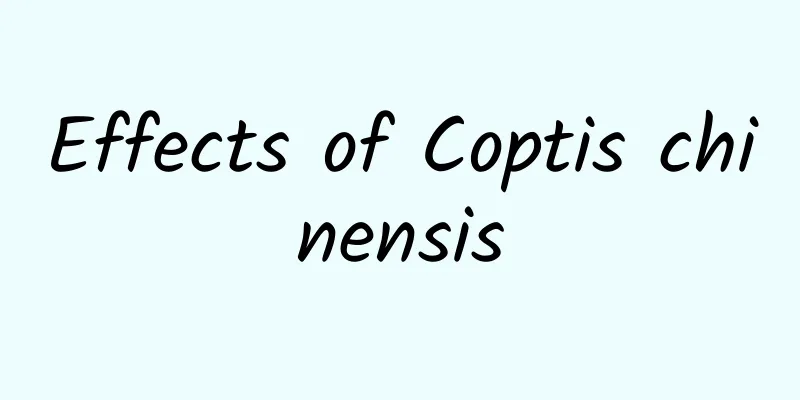Side effects and contraindications of costusroot

|
Nardostachys is the dried root of the Nardostachys spp. plant of the Asteraceae family. Harvest in autumn and winter, remove fine sand and roots, cut into strips, and cut the large ones into petals longitudinally. After drying, remove the thick skin. So what are the side effects and taboos of the traditional Chinese medicine costus root? The editor below will explain it to you in detail. Nardostachys is the dried root of the Nardostachys spp. plant of the Asteraceae family. Harvest in autumn and winter, remove fine sand and roots, cut into strips, and cut the large ones into petals longitudinally. After drying, remove the thick skin. It is pungent, bitter and warm in nature. It enters the spleen, stomach, intestines, triple burner, liver and gallbladder meridians. It has the functions of regulating qi, relieving pain, strengthening the spleen and stomach and aiding digestion. It is used for chest and abdominal distension and pain, heaviness after diarrhea, undigested food, and poor appetite and diet. Stewed sweet cassia bark can strengthen the intestines and treat diarrhea. Used to relieve diarrhea and abdominal pain. The basic usage is 1.5~6g. Production Pharmacology and Efficacy of Vaccine: The effects of nard on the digestive tract include regulating gastrointestinal motility, anti-peptic ulcer, anti-diarrhea and anti-infection effects, and promoting gallbladder contraction; it has a cardiotonic effect, inhibits platelet aggregation and softens blood vessels on the endocrine system; it has a bronchodilator effect on the respiratory tract; it also has analgesic and antibacterial effects. It is used in clinical medicine to treat digestive tract diseases, endocrine system diseases, bronchial asthma, dysentery, infections, etc. Production side effects and side effect vaccines: This product has lower toxic side effects than Aristolochia, has nerve fiber blocking effects, may have curare-like effects, and can cause harm to kidney function. Common side effects in clinical medicine are: 1. Effects on the urinary and reproductive systems: general edema, oliguria, anuria, ascites, increased blood urea nitrogen and creatinine, proteinuria, hematuria, etc. 2. Effects on the digestive tract: Mainly manifested as nausea, vomiting, loss of appetite, abdominal distension, diarrhea or constipation, dry mouth, etc. 3. Impact on the central nervous system: The main manifestations are dizziness, muscle cramps all over the body, pupils that first enlarge and then shrink, muscle weakness, and even in severe cases, respiratory depression and eventually cardiac arrest. Production precautions and vaccine taboos 1. Strictly grasp the indications and use with caution in patients with yin deficiency and hyperactivity of fire. Patients with yang deficiency and insufficient body fluids should take this medicine with caution. 2. Strictly control the incompatibility of galangal and drugs. It is not suitable to be used together with antihypertensive drugs. Galangal and antihypertensive drugs have a synergistic effect, which can easily cause blood pressure to drop too quickly. 3. This product has been documented to be harmful in ancient herbal medicines. Excessive intake may cause side effects, so the dosage should be strictly controlled and quantified according to the condition and personal use. Exceeding the dosage is strictly prohibited. 4. If side effects occur, vomiting is recommended in the early stage, gastric lavage with tannic acid solution, intravenous drip and administration of vitamin B2, or drinking a lot of strong tea, taking vinegar orally, etc. Traditional Chinese medicine treatment: 30g of licorice and mung bean, decocted in water; or 30g of plantain seeds with salt, 12g of coptis root (added later), 15g of isatis indigotica, 9g of aurantium, 9g of ginger magnolia bark, 6g of licorice, decocted in water. |
>>: Top Ten Precious Chinese Medicines
Recommend
The Yellow River and the Yangtze River "shake hands" here after crossing the Qinling Mountains for nearly 100 kilometers
February 22, 2022 11:20 With TBM (Tunnel Boring M...
The efficacy and function of bamboo forest
The environment is now seriously deteriorating an...
The extraction of soil from the far side of the moon shocked the world. What is special about the “dark side of the moon”?
Review expert: Qian Hang, aerospace science exper...
Are the bamboo shoots eaten by giant pandas actually poisonous?
When it comes to bamboo shoot experts, the giant ...
The efficacy and function of iron-wrapped gold
The Chinese medicine Iron-wrapped Gold is a relat...
Black cars go with white bird droppings, and white cars go with black bird droppings. Is it a coincidence?
Recently the tree has turned green again, and its...
The efficacy and function of deep mountain violet
The world is full of wonders, and Chinese medicin...
The pictures and functions of the ground ring
The natural ground ring is a very vigorous green ...
Wireless charging, say goodbye to the "wired" life!
Wireless charging form There are three types of w...
The medicine Hua Tuo prescribed for Cao Cao is really amazing
During the Three Kingdoms period, it was said tha...
The importance of sleep: It turns out that sleeping well has so many benefits!
Sleep is an important and indispensable part of h...
If you see these creatures on the beach, don't touch them!
Many people like to go to the beach for fishing o...
Effects and functions of calcined gypsum
Calcined gypsum is a medicinal material that can ...
Can Ophiopogon japonicus and Sterculia lychnophora be taken together?
As a traditional Chinese medicine, Luo Han Guo ha...
Which workers will be replaced by robots? The latest algorithm gives you the answer
When people think about a future with intelligent...









